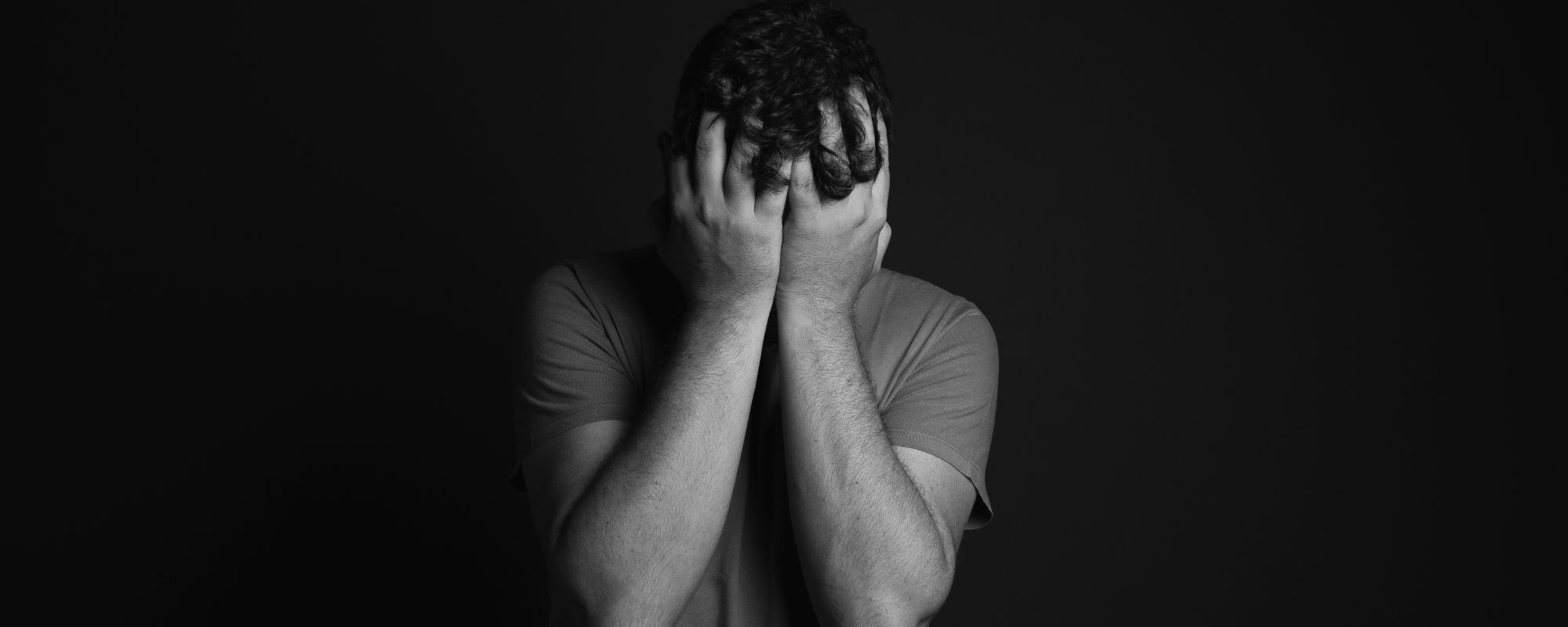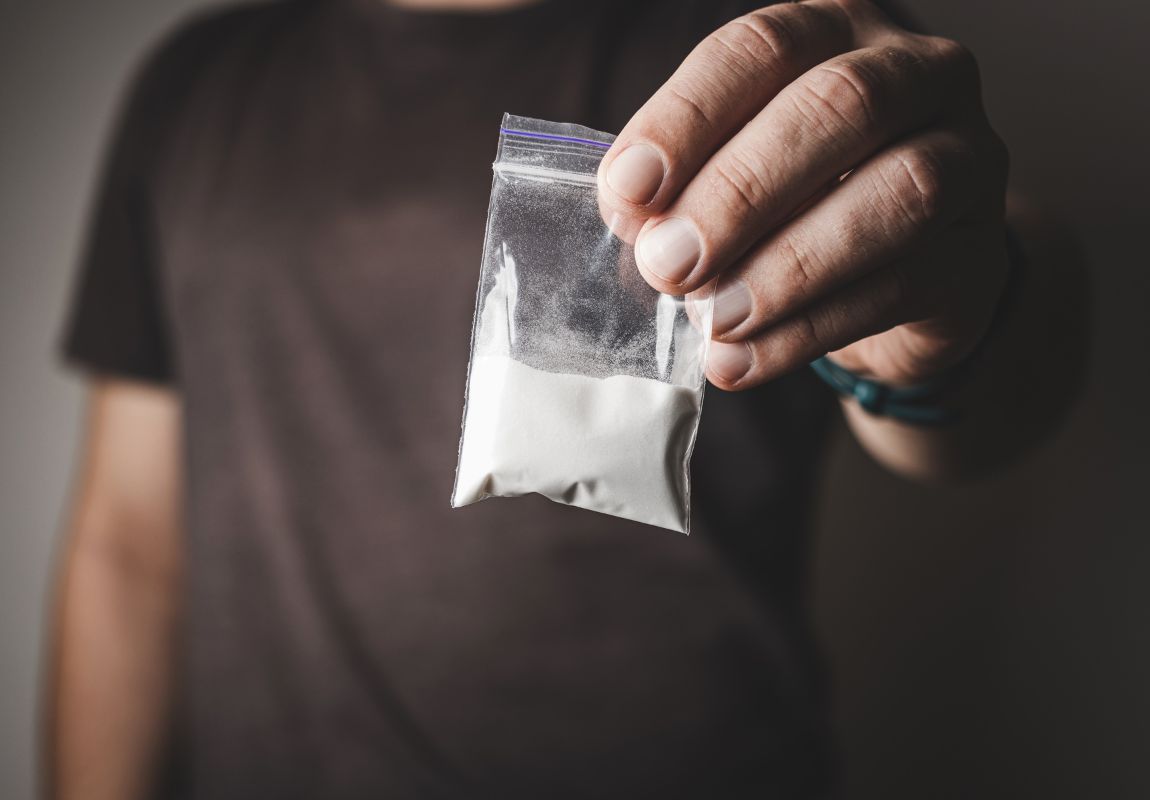One of the most noteworthy pieces of the anxiety puzzle is that it takes many shapes and forms — multiple subtypes that can vary in their intensity and severity.
With some people, anxiety is a day-to-day part of life that they can easily cope with and compartmentalize without much trouble. In others, it might reach the point where it begins to compete with work, school, or relationships.
For others still, anxiety may reach an all-consuming, crippling place where they’re unable to get out of bed, leave the house, interact with others or even care for themselves. In this moment, the biggest gift one can give themselves, or a loved one suffering with the same symptoms, is the gift of compassionate treatment.
What brand of anxiety disorders treatment do you seek? The flexible environment of outpatient therapy may not be sufficient, but a more structured, round-the-clock support, like inpatient anxiety treatment, makes a real difference. Studies show that more than 50% of adults with serious anxiety disorders showed a significant symptomatic remission from the time they were admitted to residential anxiety treatment until their time of discharge.
Read more to see how inpatient treatment for anxiety can make a meaningful difference in your recovery journey.
What Is Anxiety?
All of us, at some time or another, feel anxious. Your stomach might be in knots the day before a major make-or-break exam or a big presentation at work where all eyes will be on you. Occasional anxiety can take hold when we’re taken outside of our comfort zones — racing heartbeat, sweating, or worrisome feelings before a big date or your first day at a new job. Negative, discouraging thoughts, convincing yourself that something will go wrong, may fill your head.
“Anxiety is your body’s natural threat response system,” notes a study from Harvard Medical School. “When your brain believes you are in danger, it sends out a series of signals to your body, resulting in the fight-or-flight response.”
None of these scenarios we’re all familiar with are inherently dangerous, but anxiety travels into disordered territory when those feelings don’t ever go away or subside, even in normal, everyday situations that don’t typically warrant feeling worried, fearful, tense, apprehensive, full of dread, or even panicked.
It’s when that built-in response to perceived threats — whether they’re real or imagined — goes into overdrive that an anxiety disorder can begin to manifest.
Anxiety disorders are verified as the most common mental health disorder in the U.S., according to the Anxiety & Depression Association of America (ADAA), affecting 40 million adults (nearly 20% of the entire population) annually.
Anxiety Disorders Explained
Where do anxiety disorders originate? According to the National Alliance on Mental Illness (NAMI), it comes down to nature and nurture.
Your genetics may play a role since a history of anxiety disorders in families can be passed down generationally. (“Some families have a higher-than-average amount of anxiety disorders among relatives,” says NAMI.)
Your environment and experiences can also shape the formation of an anxiety disorder. Witnessing or living through a single traumatic event, losing a loved one, or being exposed to regular, stressful situations can influence the development of anxiety disorders.
Generalized Anxiety Disorder (GAD)
GAD currently affects 6.8 million adults, or just over 3% of the entire U.S. population, notes the ADAA. GAD is characterized by persistent, excessive worrying about regular, everyday life and matters. This constant state of worry with GAD is almost always disproportionate to the situation — it could be catastrophizing minor issues or becoming obsessed over work, health, family, or finances. The constant stress of GAD can create exhaustion and other physical symptoms like headaches, sleeplessness, or nausea brought on by the tension.
Social Anxiety Disorder (SAD)
SAD (which can also stand for Seasonal Affective Disorder, a type of depression) goes beyond merely feeling shy or bashful. People with SAD display an extreme self-consciousness, afraid of being judged or scrutinized, or embarrassed or humiliated around others. Attending a social event, speaking up at work or school, participating in conversations or even eating out in public can trigger your anxieties. Avoidance becomes common, as someone with SAD may go to great lengths to isolate themselves, making it difficult to meet new people and form and maintain relationships or pursue opportunities. According to the National Institute of Mental Health, 15 million people — 7.1% of the population — suffer from SAD.
Panic Disorder
Affecting 6 million adults, or 2.7% of the population, panic disorder is marked by frequent panic attacks — sudden moments of intense fear in everyday situations that can come on without warning. A panic attack can be frightening and often mistaken for a heart attack due to the physical symptoms you might feel, like heart palpitations, chest pain, shortness of breath, or dizziness. With panic disorder, you may dread future panic attacks, leading many sufferers to avoid places or situations in an attempt to minimize them from happening.
Looking for quality treatment for substance abuse and mental health that’s also affordable? Aliya Health Group's treatment facilities accept most major insurance providers. Get a free insurance benefits check now!
Check Your CoverageWhat Is Inpatient Anxiety Treatment?
Anxiety inpatient treatment is also known as residential anxiety treatment because during your time in therapy, you’ll live onsite at the facility — a safe, trusting therapeutic space — so you can devote a full-time, daily focus to recovery.
Unlike outpatient care, where you’d attend therapy appointments and then return home, an inpatient setting enables the staff at inpatient anxiety treatment centers to provide you with round-the-clock care without any interruptions or gaps in your treatment schedule.
Everyone responds differently to treatment, and your progress during inpatient care may see you able to segue into an outpatient setting, where 24/7 clinical care is no longer needed once you’ve graduated from therapy, managed your symptoms, and developed the coping skills to take charge of your anxiety.
Signs Someone Needs Residential Anxiety Treatment
It’s not always easy to know exactly when to seek inpatient treatment for anxiety, especially when your symptoms may change or vacillate with your mood, time of year, and life circumstances.
So, when does anxiety become problematic enough to warrant professional help? Signs that you might need more intensive care might include:
- Your anxiety has become so severe that you’re unable to care for yourself or perform daily functions, like going to work or school, eating, or maintaining basic hygiene.
- You’re experiencing sudden, severe panic attacks that are becoming more frequent, disruptive, or dangerous (such as when you’re driving).
- You’ve experienced thoughts of harming yourself or having persistent suicidal ideation.
- You might start abusing drugs or alcohol to self-medicate your anxiety away.
- You’re developing physical health problems due to anxiety.
- Your home environment is contributing to or exacerbating your anxiety.
How Long Is Inpatient Anxiety Treatment?
The length of your stay during inpatient treatment for anxiety depends on your needs — the type of anxiety disorder you may have, the degree/intensity of your symptoms, and how well you respond to treatment are all factors.
Generally speaking, expect to commit to anxiety inpatient treatment for a few weeks up to a month, where you’ll attend counseling and therapy for five hours a day, seven days a week. If your diagnosis also includes addressing an addiction to substances or alcohol, you may require going through detox, a week-long process to flush the remnants from your system.
What Happens During Inpatient Treatment for Anxiety?
There are a few components always in place at residential anxiety treatment centers:
Individualized Treatment Plan
No two people in rehab or treatment follow the same trajectory. Even though you might struggle with the same disorder, your separate needs, symptoms, and situations may create nuances in your therapy compared to someone else. When you sign up for treatment and talk to one of our admissions staff, it’s through this correspondence that you’ll both be able to determine that inpatient treatment for anxiety is right for you.
When you arrive on your first day onsite, the first thing you’ll do after checking in is to meet with your therapist. They’ll be the ones to guide you through your entire time in inpatient anxiety treatment, starting with the creation of an individualized treatment plan. Top to bottom, start to finish, it’s tailored for what you need to get out of treatment — meant to reflect every facet of therapy that sets you on the road to recovery most effectively and efficiently.
As you go through your time in anxiety inpatient treatment, you and your therapist may make changes to your plan depending on needs that may arise, such as incorporating medication into your regimen.
Psychotherapy for Anxiety
The backbone of any inpatient anxiety treatment program is psychotherapy, aka talk therapy. You’re likely already familiar with the clinical setting — in a comforting, quiet, plush space lit by natural light, you’ll sit one-on-one with your therapist as you talk through your issues. You might recount how anxiety affected you as far back as childhood, up to the details of the current day, as your therapist helps you make sense of how you feel, how to cope, and how to move forward.
One common type of therapy you might try is Cognitive Behavioral Therapy. CBT, for short, helps you recognize and reframe unhelpful thought patterns that may fuel anxiety. There’s also exposure therapy, where your therapist cultivates a safe environment for you to face your fears and desensitize yourself to them. “You’ll learn to attach new, more realistic beliefs to the things you’re afraid of” with exposure therapy, says the Cleveland Clinic.
Holistic Therapy for Anxiety
Alternative therapies meant to complement psychotherapy side by side are called holistic treatments. Holistic means “whole” and is designed to nurture your mind, body and spirit in tandem through a series of approaches that build your resilience mentally and physically. During inpatient treatment for anxiety, they might include:
- Mindfulness and meditation to calm your nervous system taxed by anxiety and anchor you in the present moment
- Yoga and breathwork therapy to release mental and physical tension, reduce your stress hormones, and let go of anxiety with each exhalation and pose
- Expressive arts therapy, like painting, journaling or music as a creative outlet to process anxious emotions that may be difficult to articulate verbally during talk therapy
Get confidential help from our addiction and mental health treatment facilities located across the United States. Call to join one of our quality programs today!
Speak With Our Admissions TeamWhat Are the Benefits of Inpatient Programs for Anxiety?
Anxiety inpatient treatment is immersive and intensive, but the benefits speak for themselves:
- Full, integrated care: A comprehensive plan combining psychotherapy and alternative therapies makes sure all aspects of an anxiety disorder are addressed simultaneously rather than separately.
- A safe, structured environment: The regular, daily schedule on your treatment calendar makes treatment your priority, maximizing your success at completing recovery.
- Removal from triggers: Because you’re onsite with a full, unfettered focus on recovery, there are no anxiety triggers to distract or pull you away from treatment.
- Support from peers: If group therapy is part of your plan, living alongside others in recovery allows you to relate to each other, bolster up one another and reassure you that you’re not alone in your journey.
- A transitional space: Inpatient treatment for anxiety cues you up for outpatient treatment and subsequent steps in your recovery.
Anxiety and Substance Abuse: What’s the Connection?
There’s a close, bidirectional relationship between anxiety and substance abuse, and it’s not uncommon for both to go hand in hand. In fact, multiple studies show that about half of people with a mental illness will also experience a substance use disorder, and vice versa — and that anxiety disorders were the most strongly tied to substance dependence.
Co-Occurring Disorders
When a drug addiction and anxiety disorder exist simultaneously, they’re known as a co-occurring disorder. That means that anxiety can antagonize and drive substance abuse, and substances can worsen your anxiety symptoms. One might begin before the other — for instance, someone with a drinking problem might develop anxiety, or you might begin taking drugs to quell the fear of your next panic attack.
Because the interplay between both conditions can mask the other, they need to be diagnosed dually as one special co-occurring disorder to be treated specially at the same time.
Dual Diagnosis Treatment
The right residential anxiety treatment centers are built to treat co-occurring disorders through dual-diagnosis treatment that addresses anxiety and drug/substance abuse at the same time.
The first step may begin with detox, a dedicated period of time where you must stop using substances so medical staff can help you navigate the discomfort that may come with withdrawal symptoms after your body and brain have become dependent on drugs or alcohol. It’s a comfortable setting where your vital signs are monitored, medication is administered if needed, and your needs are tended to.
When it comes to moving into talk and holistic therapy, your therapists will tailor your anxiety disorders treatment plan to make sure that both anxiety and substance abuse are targeted, recognizing their interconnection with each other.
Find Anxiety Treatment Near Me
Anxiety disorders can worsen over time if left untreated. There’s no reason for you or a loved one with a potential anxiety disorder to keep suffering. Making the decision to pursue treatment becomes a brave, accountable step, but searching for “anxiety treatment near me” can become challenging with the multitude of available options. What do you look for in a professional mental health counseling provider?
Firstly, determine their clinical expertise. Does the team have experience treating the full spectrum of anxiety disorders, as well as co-occurring conditions? Do they offer both evidence-based and holistic therapies? Are there additional levels of care bridging inpatient anxiety treatment and outpatient care?
What are the resources that the facility offers after your mental health treatment ends? Is there ongoing support? Most importantly, will it be covered by your insurance, and what might your out-of-pocket obligations be?
The good news is that Aliya’s network of residential anxiety treatment centers stands by our philosophy of treating you as a whole person, compassionately, not just your symptoms. Anxiety doesn’t have to rule your life. We can help. If you have some of these questions needing answering about anxiety inpatient treatment, call us today. Specialists are on hand 24/7, 365 days a year to help get you on the path to healing.
- https://pubmed.ncbi.nlm.nih.gov/28409715/
- https://www.health.harvard.edu/blog/do-i-have-anxiety-or-worry-whats-the-difference-2018072314303
- https://www.mentalhealth.org.uk/explore-mental-health/statistics/anxiety-statistics
- https://adaa.org/understanding-anxiety/facts-statistics?gad_source=1&gad_campaignid=21784584426&gbraid=0AAAAADOzZlmuZ5sZMznrAZ77w3WAtRhtV&gclid=CjwKCAjw87XBBhBIEiwAxP3_AzCpjjepemggb3PDo1XN4dsPFhT4fc2f10CJl982Yz1znGYzh86b_xoC2xYQAvD_BwE
- https://www.nami.org/about-mental-illness/mental-health-conditions/anxiety-disorders/
- https://www.mayoclinic.org/diseases-conditions/anxiety/symptoms-causes/syc-20350961
- https://www.nimh.nih.gov/health/statistics/social-anxiety-disorder
- https://www.mentalhealth.org.uk/explore-mental-health/statistics/anxiety-statistics
- https://healthcare.utah.edu/hmhi/treatments/hospital-inpatient-program/when-to-seek-help
- https://my.clevelandclinic.org/health/diseases/9536-anxiety-disorders#management-and-treatment
- https://www.ncbi.nlm.nih.gov/books/NBK571451/
- https://pmc.ncbi.nlm.nih.gov/articles/PMC2904966/#:~:text=Anxiety%20and%20substance%20use%20disorders%20are%20among,lifetime%20rates%20of%2028.8%%20and%2014.6%%2C%20respectively.&text=The%20pattern%20of%20results%20also%20shows%20that,3.0%2D6.0)%20than%20substance%20abuse%20(OR%20=%201.2%2D1.6).
- https://my.clevelandclinic.org/health/diseases/24426-dual-diagnosis#management-and-treatment








